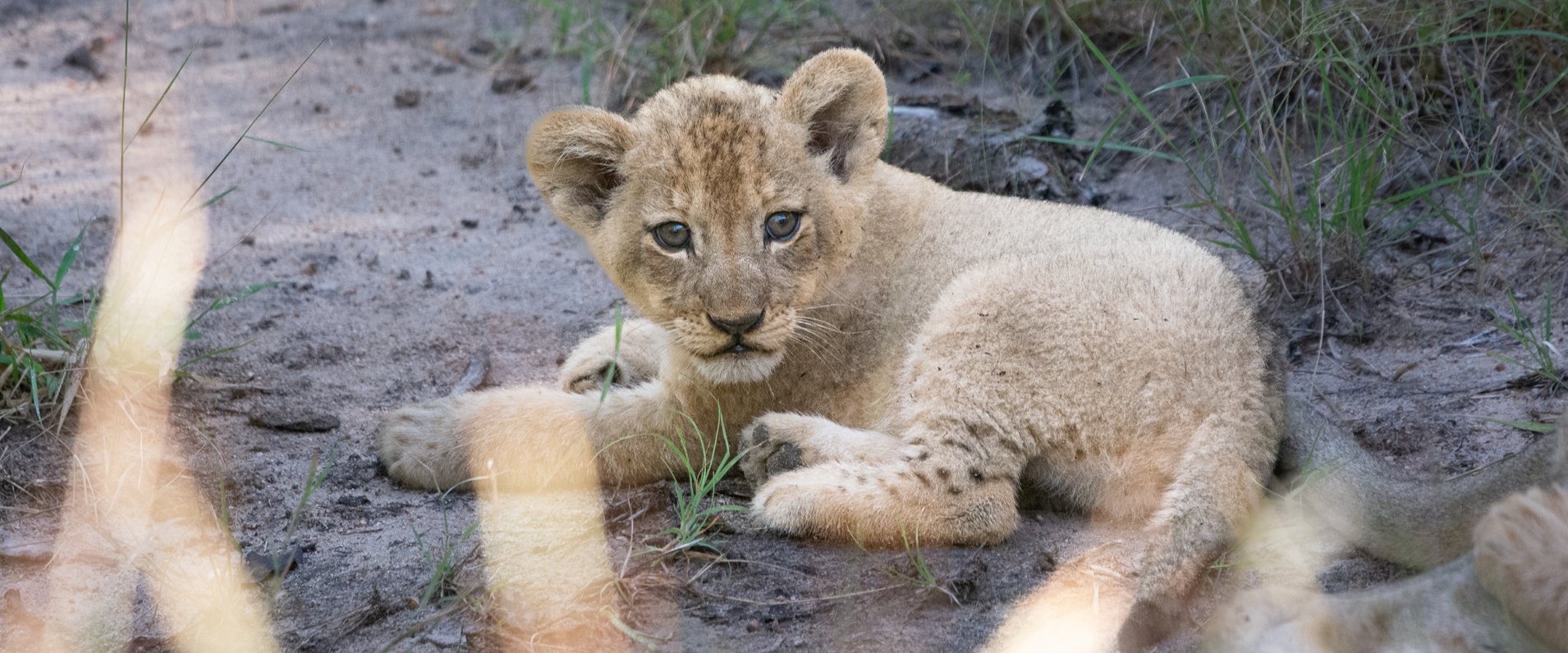A Week in the Bush Vol. 490
on Jan 31, 2024There seem to be a lot of babies on the reserve at the moment and we are thoroughly enjoying the cuteness!!
A lone lioness strolled down a dirt road through the brisk morning air. A lioness of the Talamati Pride, eventually switching the dirt path for a game path. She walked nonchalantly towards a nearby drainage line banked by immensely dense foliage, however excitement grew in the vehicle. She lay in a small opening; early beams of sun warmed her accompanied the songs of birds. That was until an unusual noise joined the chorus of bird. The lioness seemingly responded, and it all became clear.
We knew some pride members had given birth and that the cubs were somewhere in the general area. She rose to her feet and headed off into the dense ravine. We thought that was it but a few moments later she re-emerged, this time with 3 beautiful cubs in tow. She lay down once more, her mischievous brood playing with her and one another, until time had come for feeding. The cubs lay quietly suckling, as guests, guide and tracker all looked at one another in absolute astonishment at what an unbelievable privilege we were witnessing on a surreal morning safari.




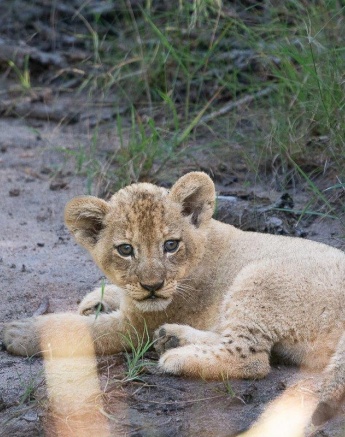
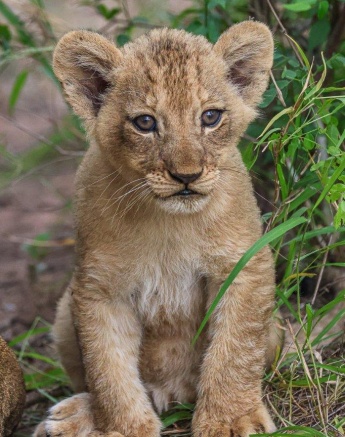


Driving along the roads surrounded with thick vegetation this time of the year, often hides the best treasures. As we came around a corner something caught our eyes, leopard cubs! Ntsumi’s cubs were lying down next to a small waterhole, resting, and hiding away from any potential danger with numerous trees around them if need be. As there was no sign of Ntsumi, we decided to leave the area and let them be while their mother is out hunting, looking to keep them healthy and in the good condition they are.
Cubs at this age are still very vulnerable as they can’t defend themselves and with us present, we might attract scavengers such as hyenas to see what's going on, immediately putting the cubs’ lives in danger. After all, we are here to protect and conserve the wildlife and keep it as natural as possible.

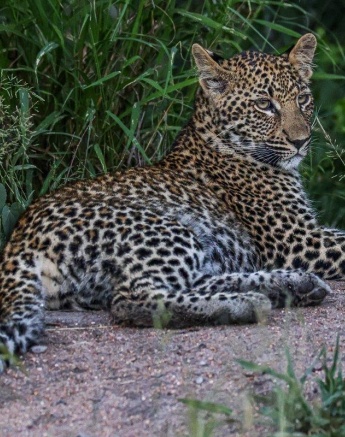



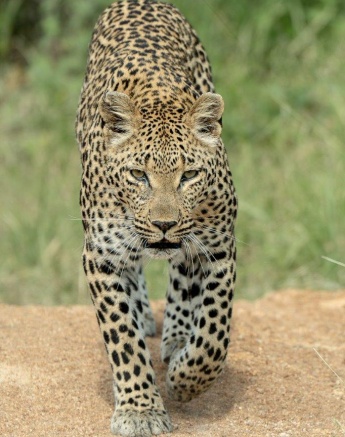
In the far Northeastern reaches of our reserve, a nomad took a moment to pause in his journey. The last of the powerful and notorious Southern Avoca Coalition quietly lay in the grass. Since being displaced from his territory, the disappearance of his brother and his loss of control over the Sand River Pride, the aging male has been seen frequenting former familiar territories. He got moving, fresh injuries on his face and a slight limp were a reminder of the harsh realities of the life he now faced. He moved away, one could sense that despite his seemingly bleak situation there was no shortage of pride, power, and determination in him.

After a brief visual of the Southern Pride the night before, we decided to follow up on their last known location. As we arrived in the area, tracks were going in every possible direction, clearly indicating a busy night. Our job to track them was made easy as we found the two cubs in the middle of the road with two of the lionesses stalking impalas close by. A quick alarm call from the impalas had them running for safety and the pride regrouped and groomed each other shortly before moving off deeper into the luscious vegetation.
These lions will find a spot to spend their day before getting active again later. The one younger lioness has clear suckle marks which indicates she still has cubs and hopefully it is only a matter of time before we get to see them for the first time.



After finding tracks of a lion pride right outside Selati Camp, we followed the tracks as they crossed through drainage lines and thick blocks. Hopping out of the vehicle every couple of hundred metres to make sure we were still on the right track. Shortly after we found impalas running across an open area and upon closer investigation found the Styx Pride sleeping in the treeline. This pride is going from strength to strength at the moment and is in excellent condition. They were still fully aware of all the potential prey around them as they were staring into the vast open plains, looking for any opportunities that might present themselves.
With the young lionesses in the pride becoming the right age to start mating, the pride may be moving a lot in anticipation of meeting potential mates, especially the territorial males of the area. We have been hearing the males’ territorial calls from long distances hopefully they will meet at some point.

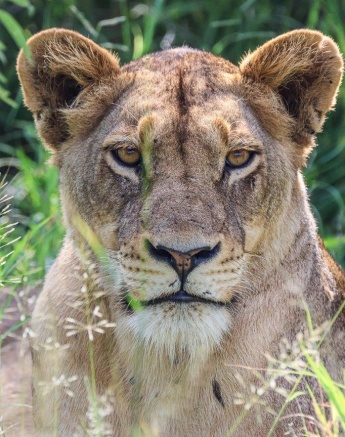

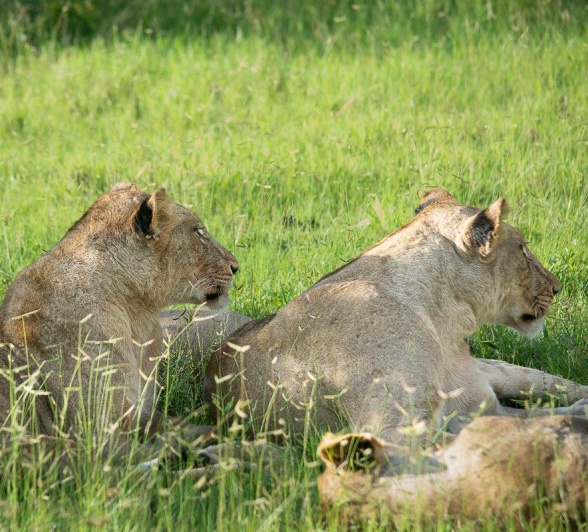

We were pleasantly surprised when we came across a pack of wild dogs lying on the road relaxing. We had no idea they were in the area as we had not seen any tracks. They heard impala calling nearby and, in a flash, they were gone. We followed and caught up with them as they were just finishing their kill with only skin and bones remaining.
Wild dogs eat as fast as they can to prevent other predators. like hyenas, from snatching their hard-earned meals.


We found the Golonyi female as she was sleeping, her ears twitching left to right every now and then, always aware of her surroundings. She suddenly got up, staring straight into the direction of an impala herd we passed minutes earlier. She decided not to follow up as it was clear she had a meal not long ago, moving off deeper into the luscious summer vegetation before becoming static again, hiding from the sun. She will most likely spend most of the day in the vicinity where she feels safe, preparing for an active night of possible hunting opportunities.


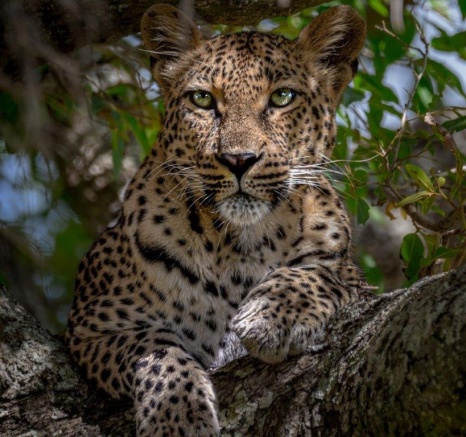
Fresh tracks of a big male leopard had us all excited for what lay ahead for our morning safari. It didn’t take us long to find the astonishing N’weti male wandering about his territory. His mind was set on where he wanted to go and he led us straight into a drainage line, where he stopped to lie down on the cool sand, covered in shade. This is the perfect spot for him to spend the rest of his day, waiting for nightfall again.


Leopard caught Tracker Tshepo’s eyes, and he quickly hopped off the vehicle to inspect them closer. We quickly established the direction in which this male walked, and our thoughts were confirmed when we heard a kudu alarm calling not too far from us. Excitedly we got back into the vehicle and drove to where we thought the leopard might be. A very excited “Leopard!” came from the tracker’s seat as Tshepo spotted him. The Nottins male showed off by jumping onto a fallen over Marula tree to get a better vantage point over the area. As soon as he established a direction, we followed him as he went from one termite mound to another and jumping into a few trees as he went.


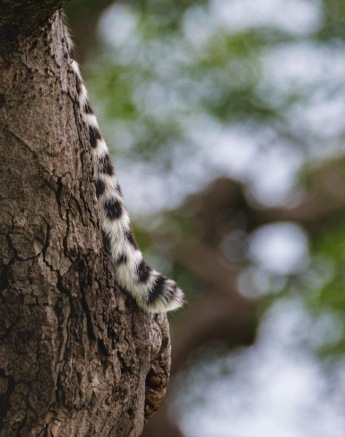
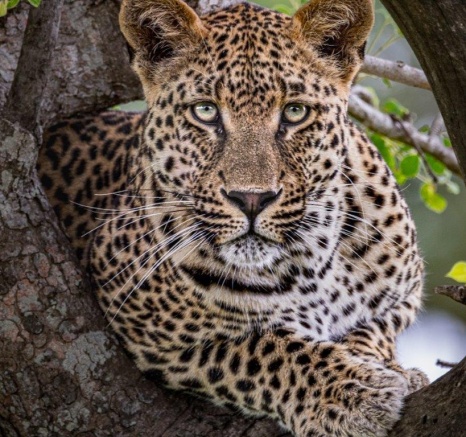
As we were driving, long grass was towering on either side of the vehicle, but tracker Donald still amazed us with his eagle eyes. His voice was filled with excitement as he turned to us and said, 'Leopard!’. We stopped and confirmed that the Khulwana male was lying next to the road watching a herd of impala. As he got closer and excitement levels on the vehicle started rising the impalas got a glimpse of him and scattered as they were alarm calling, warning all prey in the area. Khulwana made his way deeper into the thickets as the sun was setting, hoping he would soon get lucky and take down a prey. Leopards flourish in summer months, as the bush is extremely thick and the grass is very long, and with their absolute incredible camouflage it works wonders as they use this to get as close as possible to their prey before making their next move.
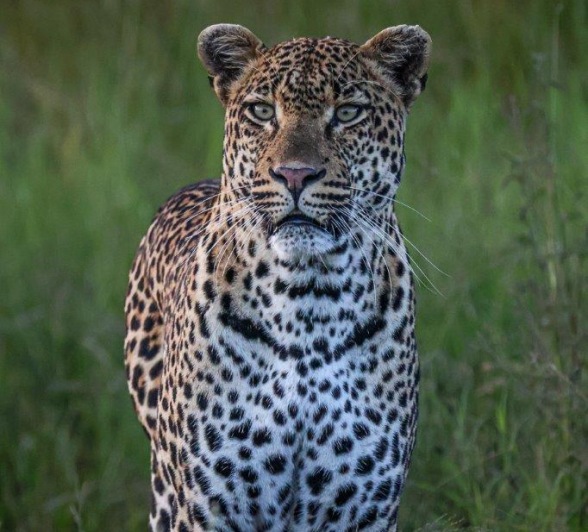
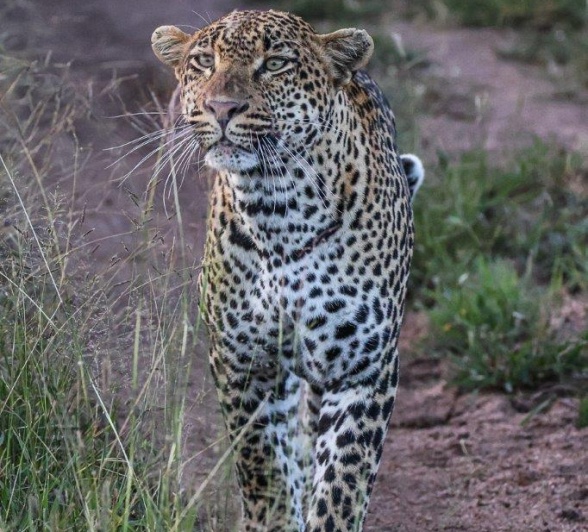
After finding tracks of a female leopard with her cubs we tried to follow up. It is always an art tracking a leopard and we circled the area numerous times. Shortly after we went back to the last tracks and found the Tengile female strolling down the road, with fresh suckle marks visible it is clear she still has her cubs. She became static in a thicket enjoying the shade. These females often stop while vehicles follow them before going back to their cubs, especially when they are still very young, waiting for everyone to leave before returning to them. We watched her sleeping and decided to leave the area and allow her to carry on with her day. Only time will tell when she introduces her cubs to us.


While a lot of people believe Pangolins are strictly nocturnal animals, meaning they are only active at night, this is incorrect. These mammals are mainly active at night as their behaviour is closely regulated by weather conditions and temperatures. We were spoiled by a very rare sighting and found this young Pangolin right next to the road. As it was a cloudy afternoon this individual became active earlier than usual in search of termite larvae.
Different individuals will also have different routines, some getting active much earlier than others. Nevertheless, what an incredible privilege to find a wild pangolin and watch them walk by you on their natural grounds. Afterall, we are only spectators in their environment.


In the Bushveld the Big Five aren't the only animals that make for a good photo. Between game drives, whether on a walking safari, or wandering around the lodge grounds, is the perfect time to focus on the small stuff. This is a Robber Fly which caught some brunch.


Recent heavy rains have drenched the landscape, creating temporary wetlands and marshes around the reserve. This new habitat attracts new creatures, great and small, and particularly, birds.
Saddle-billed Storks are one such creature; their stunning markings and colour are a breathtaking sight. They mate for life; the bright yellow eyes of the female and the small wattles of the male make for simple identification. A wonderful addition to the Sabi Sabi landscape, albeit temporary as the marshes will over time dry up.
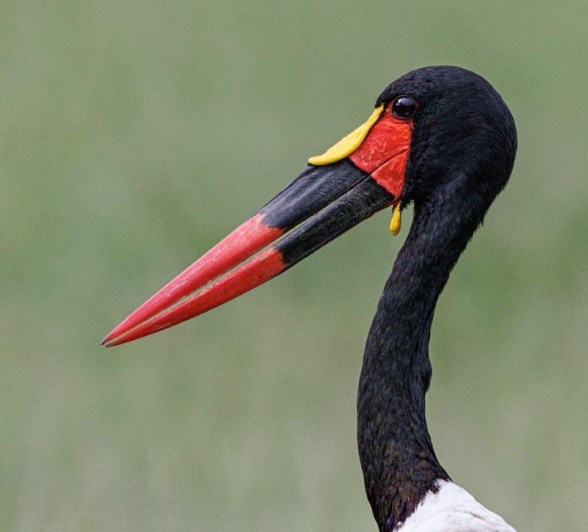
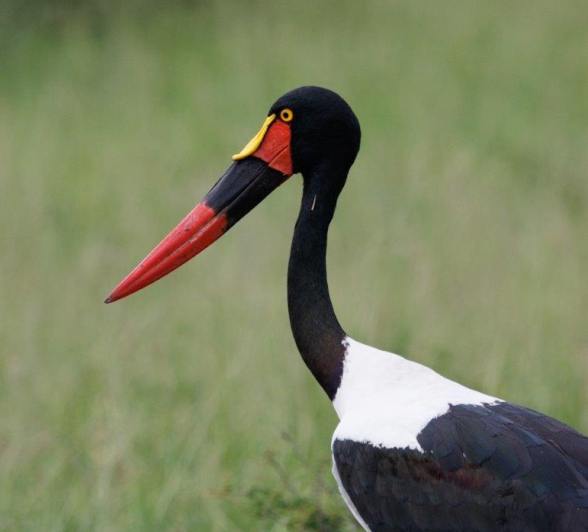
As the light was busy fading away, we stopped and sat in silence, appreciating the nature around us. A big elephant bull appeared and created the perfect portrait for us, strolling across the grasslands heading towards a waterhole. Big elephant bulls make you realise how small we really are and how incredible Mother Nature is. He walked past us, stopped, and looked at us for a second before carrying on again into the thickets. These males will continue feeding throughout the evening as temperatures are much cooler and they don’t have a lot of natural predators.

With the presence of a lioness, this small herd of Blue Wildebeest was trying to keep their calf safe after a narrow miss from the lioness. They made their way out of the area and surrounded the calf to make sure all danger was gone before continuing into the treeline for nightfall. Blue Wildebeest are very protective over their young and will try everything to protect them, even if it means to put themselves at risk to save their young.

Until next time…

Blog by Wendy Claase
Images by Benjamin Loon, Daniel Greyvenstein, Devon Jansen, Jason Street, JP van Rooyen, Ronald Mutero and Ruan Mey
Video by Jason Street
